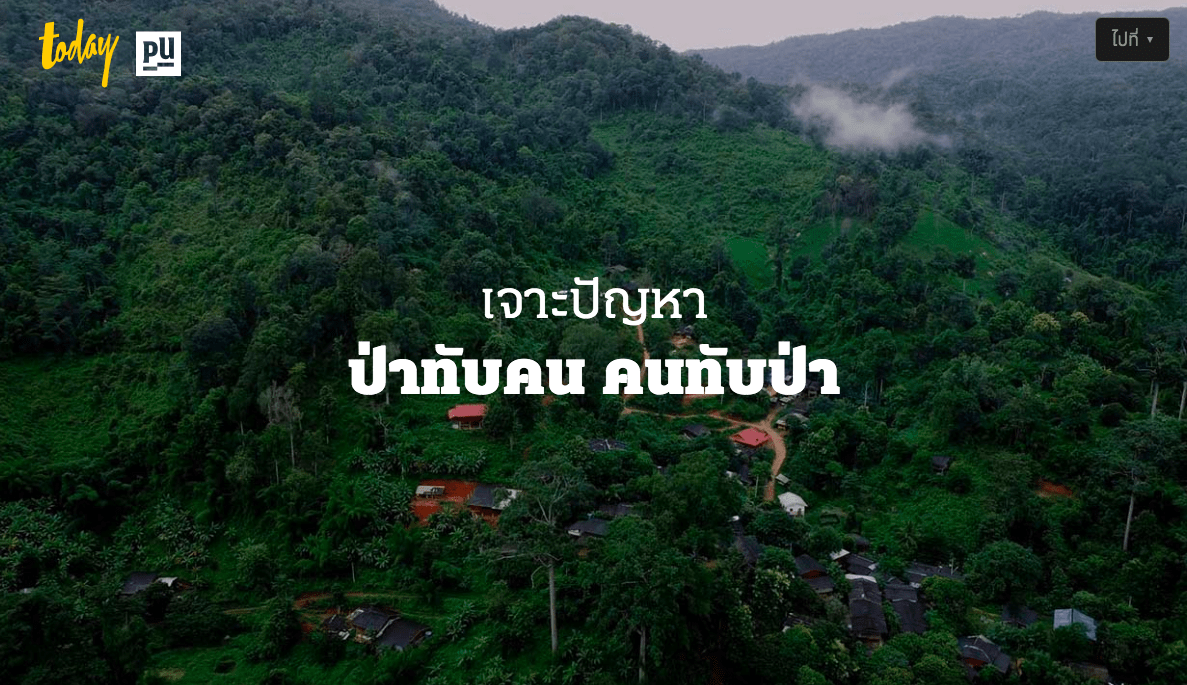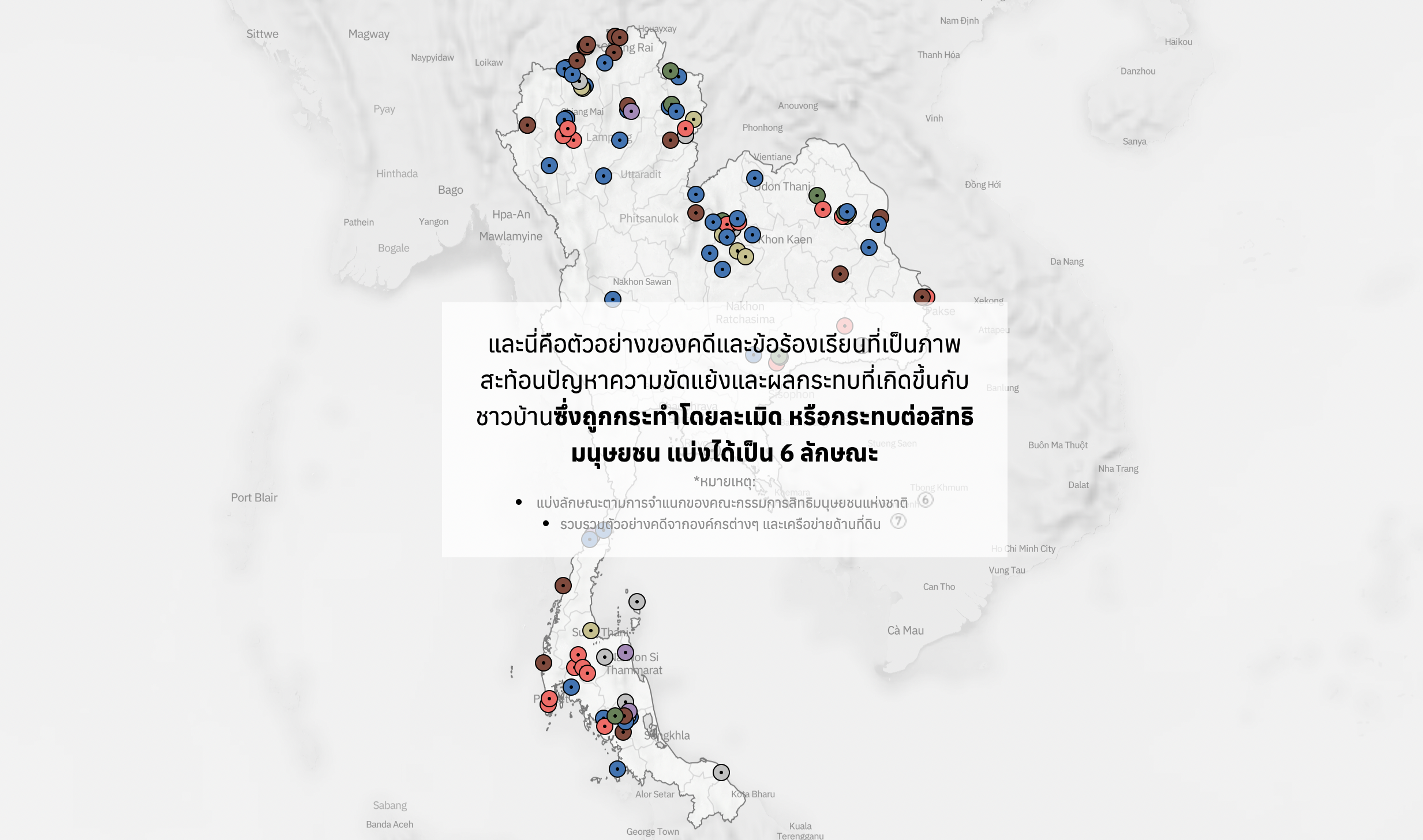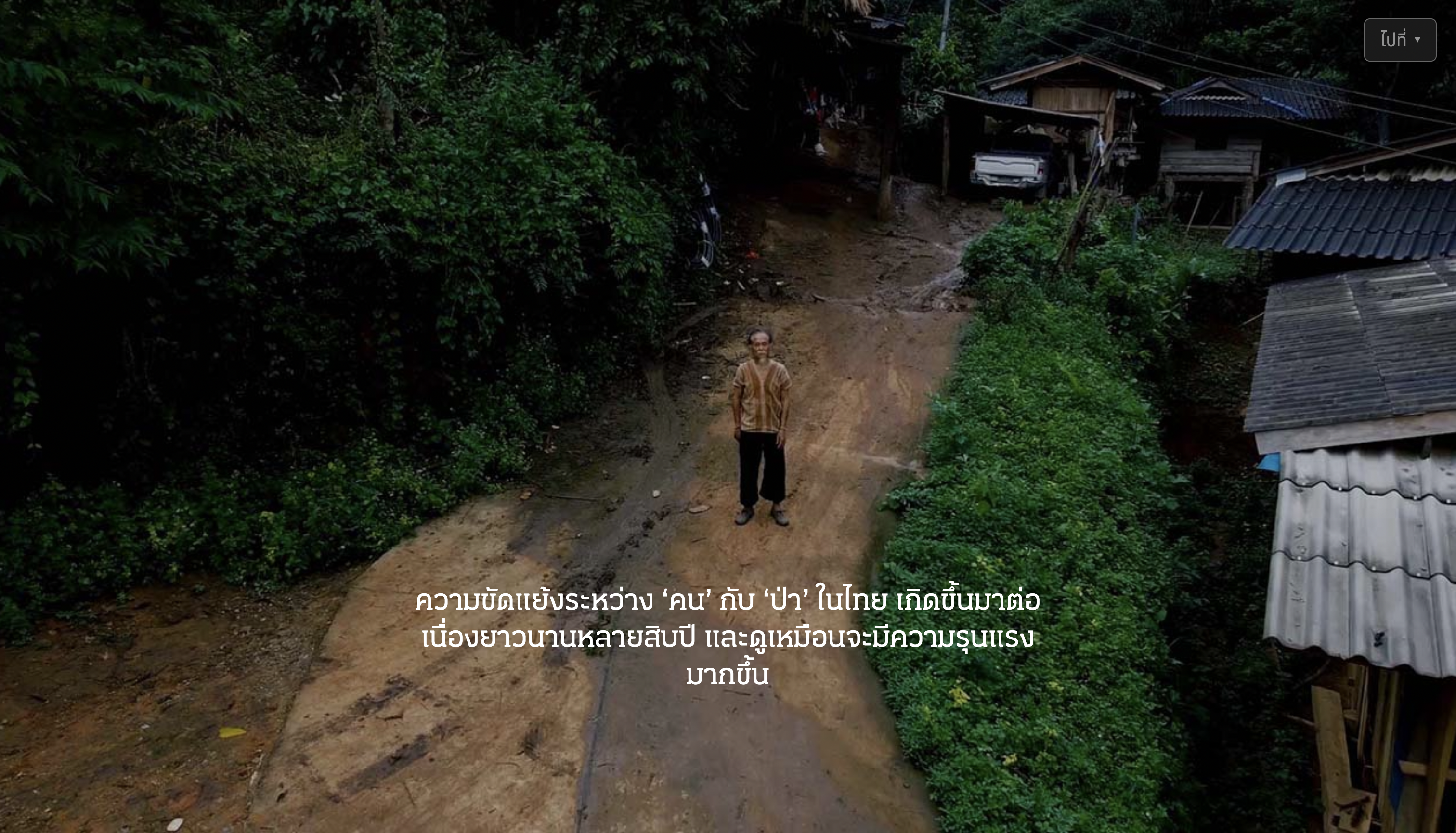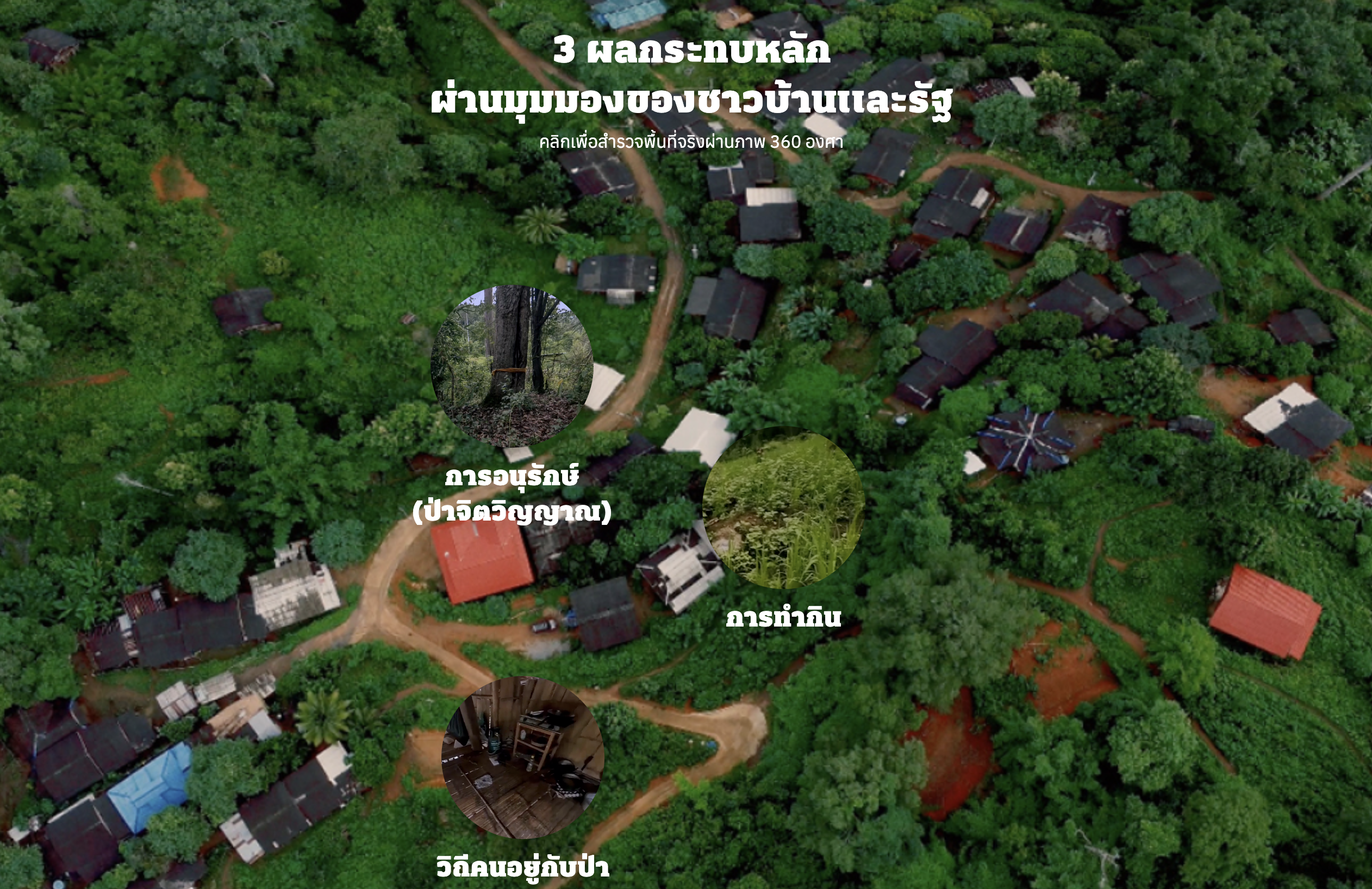The project Rethinking Thailand’s 40% Forest Coverage Target began in 2021 as a collaborative effort between grantee Patchar Duangklad and her colleagues at Punch Up, a data storytelling studio. The team conducted data visualizations and interviewed villagers, government officials, and policy experts on forestry conflict in Thailand.
“Patchar Duangklad’s reporting is special on many levels. Based on data, design, and storytelling, the Rainforest Journalism Fund grantee created an immersive experience that shows the conflict between humans and forests in Thailand like it was never portrayed before. Duangklad questioned the country’s goal to have at least 40% of forest areas and sparked debates on whether that was feasible, culturally-sensitive, or beneficial. The RJF is proud to support and showcase innovative journalism that not only asks what is on people’s minds, but does it in an engaging and original way,” said Fernanda Buffa, the Rainforest Journalism Fund assistant.
Punch Up evaluated to what extent forest reclamation was a feasible goal and how local community definitions of the forest conflicted with official government interpretations. The data visualizations reported on forestry trends, and the team reported on the specific details of forestry cases such as forced evacuations, crop destruction, evictions, building demolishment, arrests, and verbal/physical harassment across Thailand.

Rainforest Journalism Fund Intern Kymberley Chu spoke with Patchar about the project. During the interview, Patchar reflected on the power of data storytelling and navigating the complexities of each forestry conflict.
This interview has been edited for length and clarity.
Kymberley Chu: Why were you interested in reporting Thailand's 40% forest coverage? There seems to be this fascinating story about reclaiming as a complicated solution, driving a divisive wedge in this conflict between humans and forests.
Patchar Duangklad: In order to answer the question, I have to introduce what Punch Up is. Punch Up is a data storytelling studio. We are not a media outlet. But we do work closely with Thai media such as WorkPoint. One of the issues we have been working on quite a lot is environmental issues. There's a lot of issues in Thailand about the conflict between people who live in the forest and the government authorities who try to preserve the forest areas. This issue was worth exploring in our data storytelling approach. We believe in the power of data in telling the story.
We used this approach to explore why the problem happens. What is interesting for us is that the forest coverage in Thailand was 30% for almost 10 years. Then, the government set the target to 40%. Our question was, how are they going to reach that 40%? In the situation here, we cannot turn the city into forest land. Does the target make sense? Does reclaiming the forest raise environmental benefits? We wanted to see if there was data that could answer the question of whether the target made sense? What consequences were there because of the reclaiming policy? We try to gather the conflict cases of the people and the government and also from the environmental issues. We try to narrow down and analyze the roots of these issues. What we did in the project is that we tried to answer our questions with the data and the story from the ground.

KC: Where did you get all that data from?
PD: We have many data sources. Firstly, we looked for the official government data sets. What we found is that the data is not complete and not continuous. There’s a lack of data about the conflict cases. There’s an aggregated number, like the total number [of cases] but no details at all. We saw 30,000 cases over the past few years. We wondered how different the cases were. What happened? The second data source is from NGOs in Thailand. The main NGO we contacted and they helped with the data is Land Watch Thai. They worked on these environmental issues for many years and another NGO is Northern Development Foundation, which works in northern Thailand. When we reached out to them, they helped us a lot because they have plenty of networks across Thailand. When we reached out to them, they helped us a lot because they have plenty of networks across Thailand. They helped us gather the case data like the details of each case for us to manage and make visualizations such as the case study in Chiang Mai. They connected us with the community leader, got area maps, case numbers, and so on. Overall, we used three layers of data: the government’s official data, nonprofit data, and from the community.
KC: What challenges did your team face in reporting the story and the project?
PD: There's a lot of obstacles, I'll highlight one by one. Firstly, I think the issue is very complex in Thailand, the conflict between the government and the local people who live in a forest. There's a lot of layers of issues. It takes a lot of time to understand the complexity. We try to see areas we can focus on with our approach and how they tell the story based on the areas’ problems and causes. The NGOs helped us a lot with understanding the complexity of the issues and connected us with experts. The second problem is the data itself. We didn’t have the data that we wanted for answering our initial questions such as does the 40% target make sense. Lastly, I think it is about the COVID-19 pandemic. During the time we did this project, we postponed our fieldwork twice. It was quite difficult to visit the forest communities because they were afraid of getting sick.

KC: What is the importance of data storytelling?
PD: The data itself is not telling anything. It's just numbers. So we need definitions, to help visualize it, to make it more approachable, more interesting, and more understandable for the general audience. They are not familiar with data. The story itself carries and makes the meaning of the data and the design. In our work, we try to create a story connecting personal life to humanize the data so people can relate to it. I think the combination is quite a very powerful communication method. What we see in this combination is it helps people understand the issues better, make them aware of the issue better, grow interest in the issues, and also engage in the issues. We use technology such as website building for the audience to explore the issues and engage in the content. For our other projects, we created something like a small petition that people can vote on, like how they want to see the policy develop, or what main problems they face.
KC: It seems that local villagers have always coexisted with the forest. But, when you bring in the government and different state institutions, there seems to be more heightened tensions. What does “forests encroaching on people and people encroaching on forests” mean? Could you tell us more about the conflict between humans and forests in Thailand?
PD: I'll visualize it for you. The forest overlays on the people and the people overlay on the forest, that’s the term we use in Thai. The saying illustrates how we define the forest. Our project tried to explain one of the problems was the varying forest definitions the government had compared to the people living in the forest. The government defines the forest as not having humans, so if they saw humans in the forest, they would see the people as forest encroachers. On the other hand, villagers define the forest as their home, where they live. For example, when the government announces this area is the government’s reclaimed forest, the forest overlays. There is almost no room for people to get involved in the forestry processes. The root of the problem is how certain definitions monopolize control over the forest. We try to make sense of the history of the forest definitions, to see what happened in terms of policy, and how the conflict has developed. To make it more clear and understandable, we interviewed villagers, community leaders, and the government forestry agency. We wanted to understand their viewpoints and approaches to the forest.






